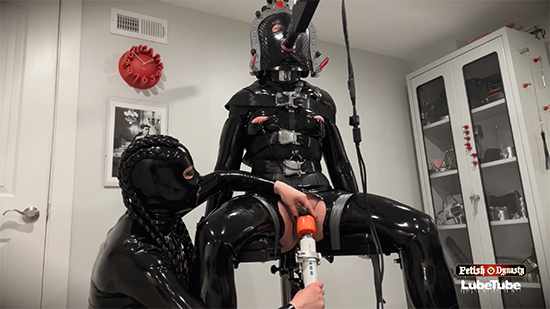There is a term associated with Autism Spectrum Disorder (ASD), and neurodivergence more generally, known as masking. It is used to “describe behaviours used by people with ASD to suppress or hide the signature characteristics of the disorder. It can also mean mirroring the behaviour of neurotypical people and developing ‘scripts’ that work in social situations.” (1)
In short, masking in an ASD context is a type of personality camouflage donned by the autistic person to fool the outside world into thinking that they are “normal” and able to fit in. You might not even know some of the people in your life who mask regularly and, if they have done their job properly, they might even be the last person you would ever suspect of such behaviour. Kudos to them, and also my sympathies. More on this below.
If you suspect yourself of masking, you might identify with “hyper-vigilance for and constant adaptation to the preferences and expectations (whether expressed, implied or anticipated) of the people around you [and] tightly controlling and adjusting how you express yourself (including your needs, preferences, opinions, interests, personality, mannerisms and appearance) based on the real or anticipated reactions of others, both in the moment and over time.”(2)
If you have ever thought of yourself as a social chameleon of sorts, able to quickly fit in with many different social groups, cliques back in high school, or situations that vary greatly in terms of manner of speaking, vocabulary, pop culture references, and so on, then you know exactly what I am talking about. It’s a bit of a superpower, but it is also exhausting. Constantly aware of how others might be reacting to what you say and do, you spend enormous amounts of energy adapting yourself to the outside world rather than being your authentic self for fear of being labelled a weirdo or, even worse, not getting what you want…or need. It is commonly understood that people with light to mild ASD are the most able to mask, while those on the more extreme end of the autism spectrum (non-verbal, etc.) simply don’t have the ability to act in a manner that is in any way considered normal for a neurotypical person.
Masking in a fetish sense should be fairly apparent if you have ever read Fetish Dynasty Magazine. The pages are filled with women in masks and is a central theme to the publication. The term mask and hood (more common) are used interchangeably in the kink world, but I will use mask throughout for consistency, and focus on latex masks in particular.
Masks are somewhat of a polarizing topic in the latex fetish scene, with some kinksters being totally obsessed with them (yours truly) and others finding them detestable. Find me a popular online female fetish personality who posts photos of themselves in and out of a mask, and I will find you plenty of comments for and against both manners of dress. From “You’re so pretty, it’s shame to hide your beauty under a mask,” to “You are so gorgeous, a mask would just enhance your beauty even further!” Regardless of where you stand, you can’t deny the mysterious and kinky aspect to masks and the visceral reaction they provoke when worn properly (remember, tight is right).
For the aficionado, masks accomplish a few things. When worn fashionably (as opposed to being worn as a form of objectification or sensory deprivation) they typically only reveal the eyes and mouth, thereby focussing attention on those features. Because one’s expressions are mainly communicated through these features, the mask amplifies them and can have a hypnotic effect on the admirer. The lips are also made to protrude slightly due to the tight latex surrounding them (who needs filler?) which even further enhances the attractiveness of the wearer. The smooth, sleek head shape adds an almost alien-like aspect and further increases the mystery. In addition (and this is more for the wearer), the physical sensation of the mask on the face can create a sense of security, especially if you have Sensory Processing Disorder (SPD) manifesting in the need for feeling tightness or compression on your body.(3)
Here is where things start to get interesting. When you wear a mask, you become anonymous to anyone who does not know who you already are. (4) It can be difficult to grasp this if you are going out in public for the first time, but as someone who regularly wears latex amongst the muggles, I can assure you that no one has any idea of who you are if you are masked (though they might be quite curious). But if no one can know who you are, there is no longer the need to pretend to be someone you are not. The latex mask masks the need to mask your personality. You can just be yourself, because what could be weirder than wearing a latex mask? You relieve yourself of the need to “fit in” and force the outside world to adapt to you, rather than the other way around.
In the end, kink is all about turning ideas, morals, conventions, and taboos on their head and redefining their meaning on your terms. You can use the pretext of kink and its tenets of negotiation, consent, and communication to overcome inhibitions and enjoy things that would otherwise be unpleasant at best and traumatic at worst. In this way, latex masks for the neurodivergent fetishist can be a tremendously liberating and exciting form of play.
Because sometimes it isn’t until we put on a mask that we reveal who we truly are.
This article originally appeared in Fetish Dynasty Magazine Issue 9 available on MagCloud
---------
1. https://www.henryford.com/blog/2023/04/autism-masking
2. https://www.autism.org.uk/advice-and-guidance/topics/behaviour/masking
3. You can also have SPD and want the exact opposite…probably not the best thing for wearing latex in general
4. I have actually had experiences where people didn’t recognize me at a fetish event until I put my mask on








